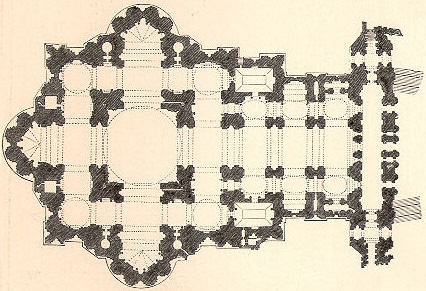Disasters And Historic Buildings: the Need of Common Data Protocol
On April 6, 2009, the Historic city of L’Aquila, experienced a devastating earthquake, resulting in 309 fatalities, over 1,600 injuries, and an estimated several billion euros in damages. In response to this catastrophe, the Italian National Fire Corps deployed over 1,000 professional rescuers within the first 24 hours, reaching a total of 2,300 rescuers and 1,100 vehicles by the third day. While the primary focus was on saving lives, it became evident that immediate measures were necessary to restore minimal safety conditions and prevent further harm to buildings.

To assess civil building damage, the Italian National Fire Corps deployed over 100 expert engineers. However, addressing damage to monuments required a more intricate approach due to their cultural and historical significance. Firefighters collaborated with cultural heritage experts from various Italian universities under the coordination of the Italian Cultural Heritage Ministry.
Addressing the use of information technologies to support cultural heritage safety activities, a Decision Support System (DSS) is commonly understood as a computer-based information system aiding organizational decision-making. When applied to emergencies, a DSS should analyze and process data from multiple sources. In practical terms, a DSS for civil protection or fire service authorities must utilize data and information from citizens, other organizations involved in rescue operations, sensor networks, simulation tools, and GIS data services.
While technology is capable of delivering complex systems, the main obstacle lies in insufficient and outdated data due to political and technical reasons. Recent emergency experiences have shown that ICT tools are rarely utilized in rescue coordination due to political attitudes and lack of interoperability services. Overcoming this challenge requires agreements between authorities to exchange data using a common protocol, as demonstrated in the 2009 L’Aquila earthquake, where a web-based system based on the Common Alerting Protocol (CAP) standard facilitated coordination among different teams of firefighters.
The use of the CAP Standard during the L’Aquila earthquake underscores the potential of computer-based information systems in decision-making during large-scale emergencies. These systems can enhance the coordination of rescue activities by analyzing and processing data from various sources. However, challenges persist in data availability and quality, necessitating further efforts to address these issues.
The response to the L’Aquila earthquake emphasizes the significance of coordinated efforts between different authorities and organizations during emergencies. While the use of the CAP standard showcases the potential of interoperability functionalities, ongoing work is required to tackle the fundamental challenges of data availability and quality.
According the Wikipedia page, “in 2007, the International Telecommunication Union, Telecommunication Standardization Sector (ITU-T) adopted the Common Alerting Protocol as Recommendation X.1303“.
According the UN World Meteorogical Organization webpage, CAP Implementations already active or in progress in:
- Asia Australia, China, Fiji, Hong Kong, India, Indonesia, Kazakhstan, Kyrgyzstan, Maldives, Madagascar, Myanmar, Nepal, New Zealand, Papua New Guinea, Philippines, Russia, Samoa, Solomon Islands, Sri Lanka, Taiwan, Tajikistan, Thailand, Tonga, Uzbekistan, Vanuatu
- In Europe, Middle East and Africa: Austria, Belgium, Bosnia and Herzegovina, Botswana, Bulgaria, Burundi, Croatia, Cyprus, Czech Republic, Denmark, Estonia, Finland, France, Germany, Greece, Hungary, Iceland, Ireland, Israel, Italy, Kenya, Kuwait, Latvia, Lithuania, Luxembourg, Macedonia, Malawi, Malta, Mauritius, Moldova, Montenegro, Netherlands, Nigeria, Norway, Poland, Portugal, Romania, Rwanda, Serbia, Slovakia, South Africa, Spain, Sweden, Switzerland, Tanzania, Togo, United Kingdom, Zimbabwe
- In the Americas: Aruba (Netherlands), Bahamas, Barbados, Brazil, Canada, Chile, Colombia, Cuba, Curacao (Netherlands), Dominica, Grenada, Guyana, Jamaica, Mexico, Montserrat (UK), Puerto Rico (US), Saint Kitts and Nevis, Saint Lucia, Sint Maarten (Netherlands), Trinidad and Tobago, United States, US Virgin Islands








